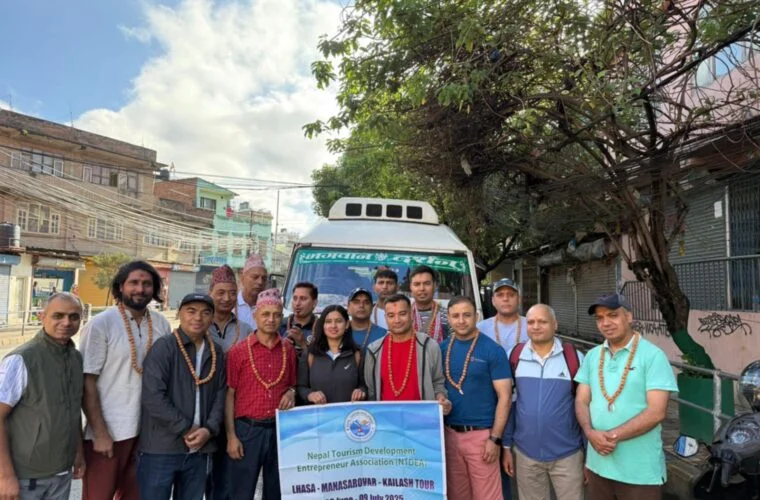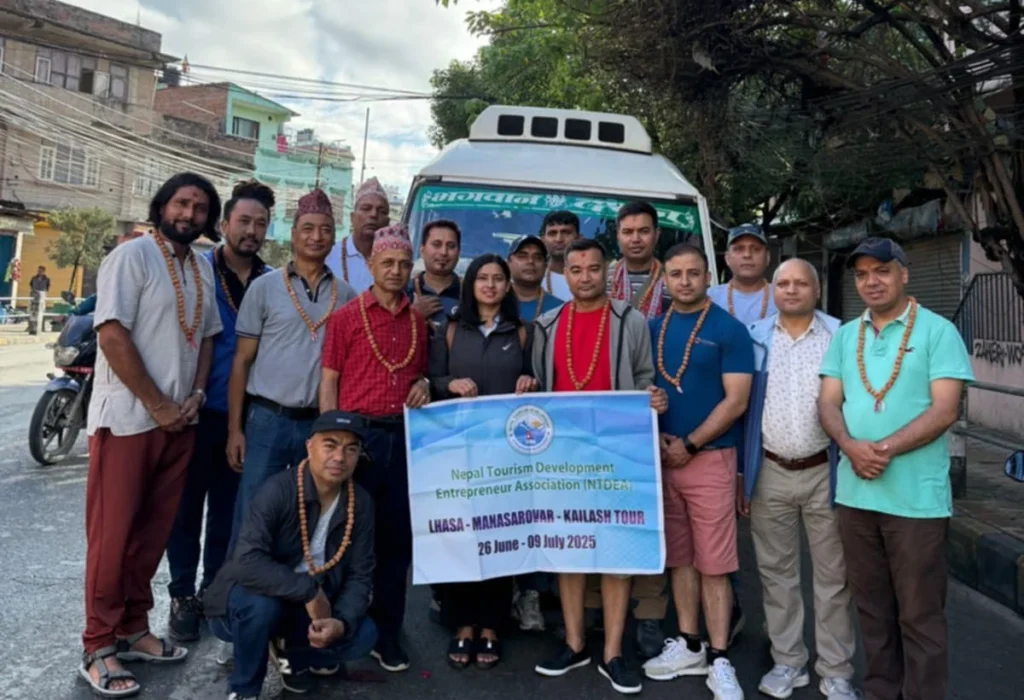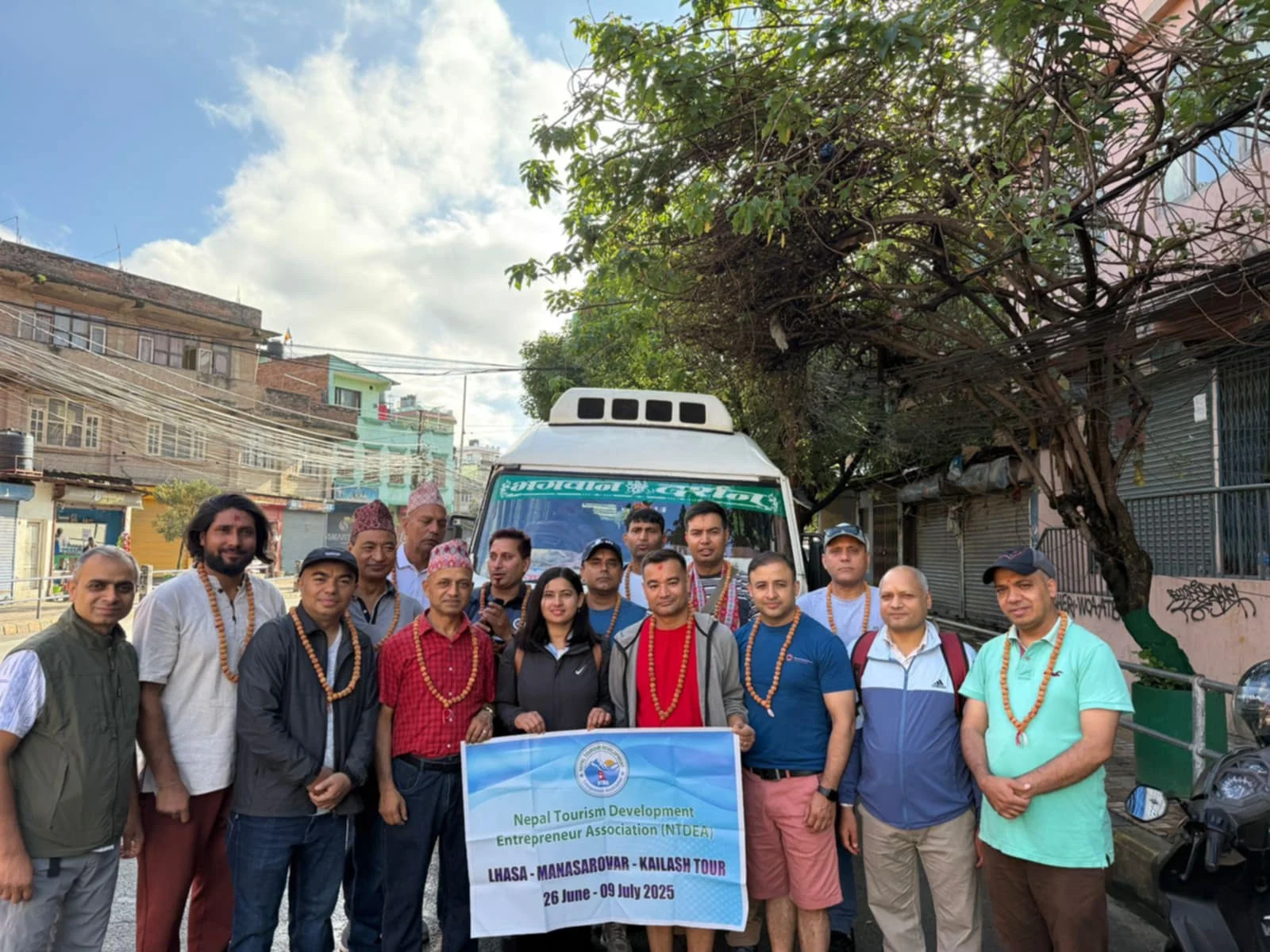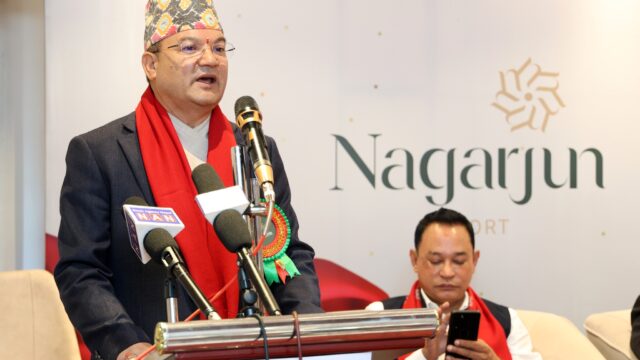In a significant step towards enhancing cultural diplomacy and strengthening tourism collaboration, a Nepali delegation has embarked on a religious and research tour to Kailash and Mansarovar, two of the holiest sites in the Himalayan region. The initiative is led by the Nepal Tourism Development Entrepreneur Association and brings together professionals from tourism and handicraft sectors with the aim of promoting Nepal’s cultural and economic strengths in these sacred areas of Tibet Autonomous Region, China.
The visit, which began earlier this week, is scheduled to conclude on Asar 26 (July 10). The tour covers key spiritual and historical destinations including Lhasa, Mansarovar Lake, and Mount Kailash, and is expected to foster cultural exchange and tourism promotion through interaction with Chinese tourism entrepreneurs and Buddhist pilgrimage circuits.
Delegation Led by NTDEA President Achyut Sigdel
The delegation is headed by Mr. Achyut Sigdel, President of the Nepal Tourism Development Entrepreneur Association (NTDEA), who emphasized the multifaceted goals of the visit. According to Sigdel, the purpose of this pilgrimage is not only religious in nature but also includes economic, cultural, and tourism development objectives.
“This visit to Kailash and Mansarovar is designed to introduce and promote the unique aspects of Nepal’s tourism potential, religious heritage, and traditional handicrafts,” said Sigdel before departure. “We aim to establish deeper partnerships with stakeholders in Tibet and initiate dialogues that can result in greater tourist flow between the regions.”
Focus on Cultural and Business Exchange
While the route includes spiritually significant places, the delegation will also engage in several business and promotional activities. Scheduled programs include dialogue sessions, tourism and cultural symposiums, and interaction meetings with Chinese tourism entrepreneurs in Lhasa and other surrounding areas.
According to Sigdel, the group will explore the feasibility of developing joint pilgrimage circuits, identify opportunities to showcase Nepali handicrafts in the Chinese market, and propose Nepal as a spiritual tourism hub for Buddhist and Hindu pilgrims alike.
“This is a unique blend of spiritual travel and tourism diplomacy,” he noted. “Our interaction with Chinese business leaders and cultural institutions will hopefully open doors for long-term collaboration.”

A Strong Representation from Nepal’s Tourism Sector
The delegation comprises experienced individuals from various segments of Nepal’s tourism and cultural industries. In addition to President Sigdel, the team includes:
- Bhagwat Singh Khada, Vice President
- Raju Thapaliya, Treasurer
- Basudev Pandey, Executive Member
- Rajkaji Maharjan, Member
- Rajan Khanal, Member
- Charan Sharma, Member
- Rameshwar Prasad Dhakal, Member
- Upendra Pathak, Member
- Bheshram Gautam, Member
- Hari Karki, Member
- Rameshwar Maharjan, Member

These individuals bring with them a rich background in tourism enterprise, handicrafts, cultural promotion, and religious tourism facilitation, making the group a well-rounded representation of Nepal’s soft power in cultural tourism.
Strategic Significance of the Kailash-Mansarovar Region
Mount Kailash and Lake Mansarovar hold immense religious value for both Hindu and Buddhist pilgrims, and every year, thousands travel from South Asia and other parts of the world to experience the sanctity of this region. For Nepal, which lies on the traditional overland route to these destinations, strengthening these religious tourism linkages carries both spiritual and economic significance.
The NTDEA hopes to leverage this pilgrimage as a springboard for expanding cross-border tourism, particularly after the disruptions brought about by the COVID-19 pandemic. By promoting Nepal’s potential as a gateway to Kailash-Mansarovar, the association seeks to attract more international pilgrims to transit through Nepal, thereby benefiting local airlines, hotels, transport services, handicraft businesses, and travel agencies.
Promoting Nepal’s Handicrafts and Pilgrimage Tourism
A key component of this tour is the promotion of Nepal’s traditional handicraft industry, especially religious artifacts, Thanka paintings, Buddhist ritual items, and handmade garments. The delegation plans to showcase Nepal’s handicraft capabilities and explore opportunities to establish Nepali products in souvenir markets around Tibetan pilgrimage hubs.
The group will also engage in informal surveys and collect research materials on how Tibet’s religious tourism infrastructure functions, with the goal of adapting best practices for pilgrimage destinations in Nepal, such as Muktinath, Pashupatinath, and Lumbini.
Strengthening Bilateral Tourism Ties
This Kailash-Mansarovar tour comes at a time when Nepal is gradually trying to diversify its tourism offerings post-pandemic and tap into spiritual, heritage, and cross-border tourism. With a balanced mix of spiritual reverence and tourism promotion, the visit marks an important step toward realizing Nepal’s long-term goals of becoming a key religious and cultural tourism destination in Asia.
The Nepal Tourism Development Entrepreneur Association has expressed hope that this initiative will lead to new promotional collaborations, enhance Nepal’s visibility among international pilgrims, and strengthen bilateral ties between Nepali and Chinese tourism stakeholders.






